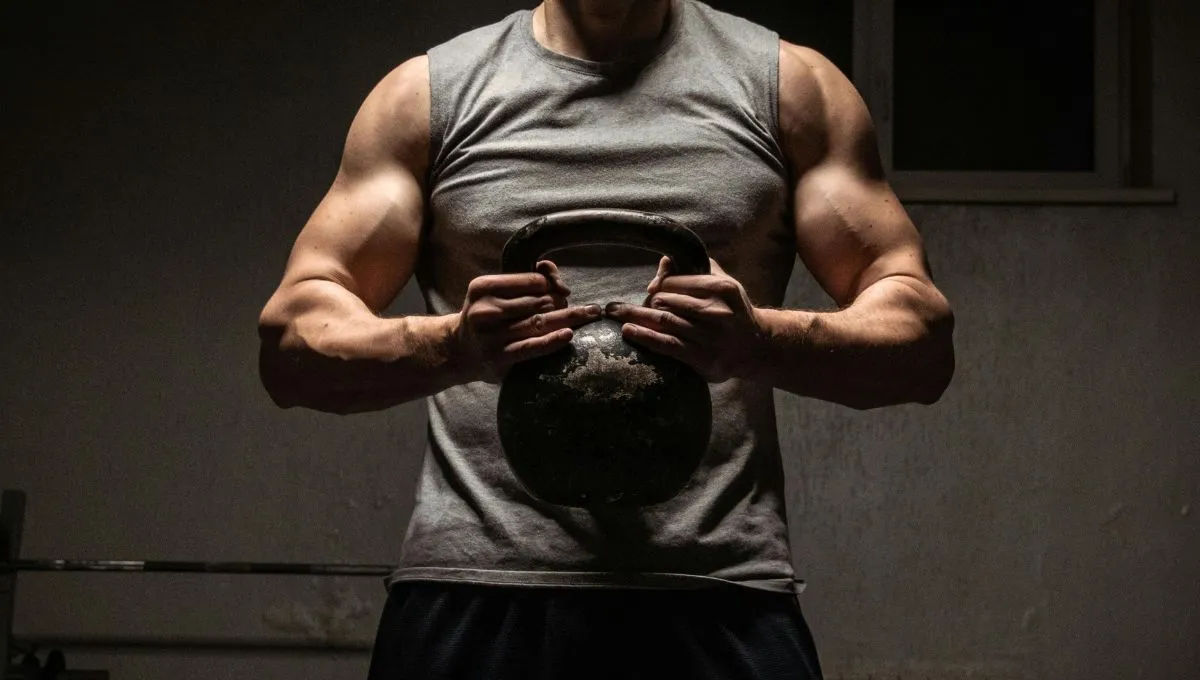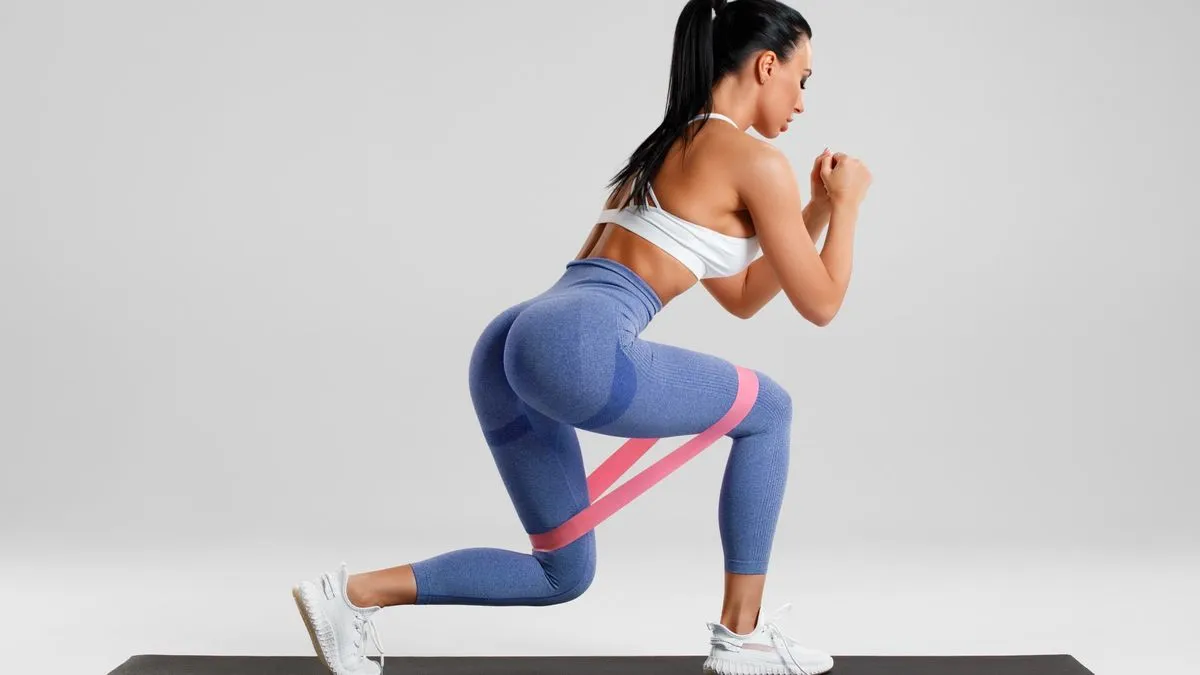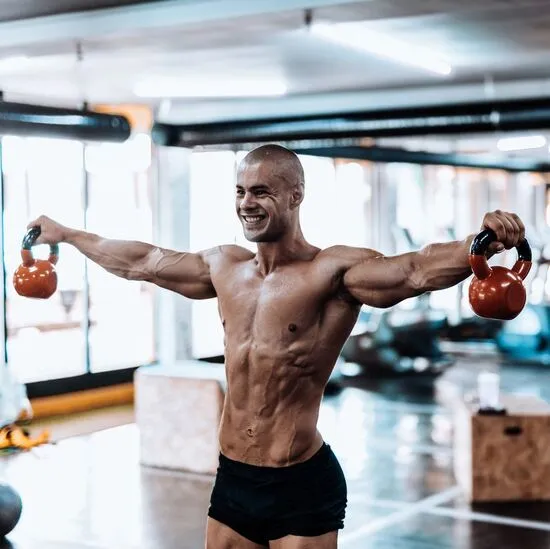10 Best Chest Exercises for Building Size, Strength, and Definition
May 16, 2025
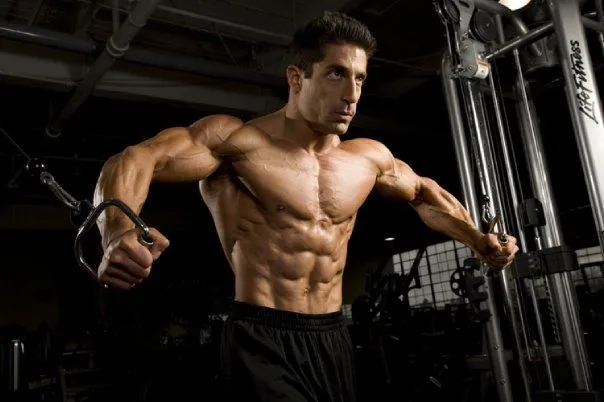
Your chest isn’t just there for aesthetics. Sure, a well-developed chest helps fill out your shirt, but it's also key to upper-body strength, pushing power, and structural balance. Whether you're benching for a bigger one-rep max or chasing hypertrophy, the right exercises make all the difference. And if you’re already hammering your biceps or trying to build a serious back, neglecting your chest is only going to hold you back.
The best chest exercises hit more than one angle. They push the pecs through different ranges, build endurance and power, and challenge the muscle in ways that mirror real movement. This isn’t about just lying on a bench and pressing weight. It's about intelligent programming, using dumbbells, barbells, cables, and even bodyweight to make your chest pull its weight.
Below, you'll find a breakdown of the most effective chest movements, whether you're lifting in a commercial gym or grinding it out in your garage. Some build size. Others target the upper or lower chest. A few will humble you even without weights. And yeah, if you're serious about that classic V-taper look, this is where you start.
Table of Contents
- Why Training Your Chest Matters
- Best Overall Chest Exercise
- Best Chest Exercise for Upper Chest Growth
- Best Chest Exercise for Lower Chest
- Best Dumbbell Chest Exercise
- Best Bodyweight Chest Exercise
- Best Chest Exercise with Cables
- Best Isolation Chest Exercise
- Best Chest Exercise for Home Workouts
- Best Chest Exercise for Muscle Definition
- Best Chest Exercise for Strength Athletes
- Tips for Structuring an Effective Chest Workout
- Wrapping It Up: Build a Chest That’s Strong and Balanced
Why Training Your Chest Matters
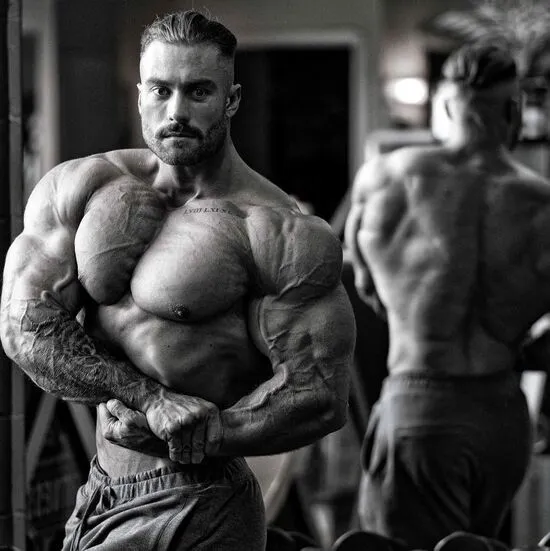
Chest day isn't just about chasing a pump or hitting a PR on the bench press. It’s about building a foundation for upper-body performance. Whether you’re pressing, pushing, or stabilizing, your chest plays a role. And when it’s underdeveloped, everything else suffers. Weak pecs don’t just limit your pressing strength; they mess with your posture, your symmetry, and even how effectively you train other muscle groups.
More Than Just Aesthetics
A full chest rounds out your upper body. It balances your physique, adds thickness to your torso, and gives your arms something to complement. You can have big biceps, but if your chest is lagging, it throws everything off. It’s not about vanity, it’s about proportion. A defined chest also improves how your shoulders sit, which affects your range of motion and even how you carry yourself.
Chest Strength Supports Overall Performance
Look at any compound push movement: barbell bench press, overhead press, dips. They all rely heavily on pec strength. Strong chest muscles contribute to pushing power, triceps engagement, and shoulder stability. That translates not only to gym lifts but to sports, combat, and real-world strength. And if you're already putting in work on your back or building up your deadlift, training your chest ensures you're not walking around with imbalances that could lead to injury or limit your progress.
Why Training Your Chest Matters
If you're looking for raw pressing power and all-around chest development, there's one move that stands above the rest. It’s the foundation of nearly every upper-body strength program and the benchmark for pushing ability across sports, lifting, and performance-based training.
Barbell Bench Press

The barbell bench press is the go-to movement for building mass and strength across the chest. It recruits all parts of the pectoral muscles but puts a heavy emphasis on the mid and lower chest fibers. Add in the anterior delts and triceps, and you’re getting a big return for your effort. The bar path allows you to control load better than with dumbbells, which is why most lifters can move more weight here than on any other chest movement.
For lifters focused on strength progression, the bench press is non-negotiable. It’s measurable, scalable, and integrates smoothly into strength splits like push-pull-legs or upper-lower programs. If your chest day doesn’t start with a heavy press, you’re leaving size and power on the table.
Programming Tip: Stick with lower reps (3–6) and heavier loads if your goal is strength. For hypertrophy, shift to 8–12 reps per set, keeping rest times moderate to short. Keep your form tight: feet flat, shoulders pinned, and wrists stacked over elbows.
Best Chest Exercise for Upper Chest Growth
If your upper chest is flat while your mid-pecs are thick, your physique ends up looking bottom-heavy and incomplete. The upper chest gives shape to the top of your torso, ties in with your shoulders, and helps build that squared, powerful look. You can’t just bench flat forever and expect the top shelf to fill in. This is where angle matters.
Incline Dumbbell Press

The incline dumbbell press is one of the most effective chest exercises for upper chest development. The incline angle shifts the stress upward, hitting the clavicular head of the pecs, a region often undertrained. Using dumbbells over a barbell gives you a deeper stretch at the bottom and allows for a more natural arm path, which reduces joint stress and helps you build fuller, rounder pecs.
This exercise also forces your stabilizers to get involved. Unlike the barbell version, you’re controlling each weight independently, which helps correct imbalances and engages your core to keep you locked in. Done right, it’s not just a chest builder, it’s a shoulder protector too.
Programming Tip: Use a moderate incline, 30 to 45 degrees is plenty. Don’t turn it into a glorified shoulder press. Keep your elbows slightly tucked, aim for 8–10 reps, and pause at the bottom to get a full stretch before pressing up strong.
Best Chest Exercise for Lower Chest
Neglecting the lower chest leaves your pecs looking incomplete like a shelf with no base. While most pressing movements hit the middle and upper regions, training the lower chest directly adds that well-rounded, cut-under-the-pec look. It also helps with strength carryover into full-range pressing and functional pushing.
Decline Bench Press
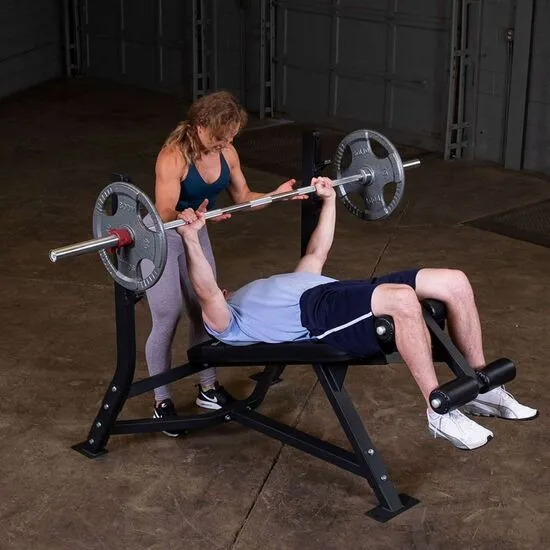
The decline bench press is your go-to move when lower chest growth is the target. The decline angle shifts more of the workload to the sternal head of the pectorals, which often gets left behind in traditional routines. It also reduces shoulder strain by keeping the arms at a more favorable angle during pressing, making it a solid option for lifters with shoulder issues.
The movement feels different than flat pressing: more controlled, more locked-in and because you’re on a decline, you’ll often be able to handle slightly more weight. While it’s not a movement you’ll find in every program, those who use it consistently tend to see noticeable changes in chest density.
Programming Tip: Use the decline press as your second or third movement on chest day. Stick to sets of 8–10 reps for controlled volume, focusing on lowering the bar slowly and pressing with intention. Keep your grip just outside shoulder width and avoid bouncing the bar off your chest.
Best Dumbbell Chest Exercise
When you're chasing size, pressing isn’t the only path forward. You need movements that emphasize stretch and contraction. Something that isolates the pecs instead of just moving weight. That’s where dumbbells really shine. They allow for natural movement and a deeper range of motion that machines and barbells can’t match.
Dumbbell Chest Fly
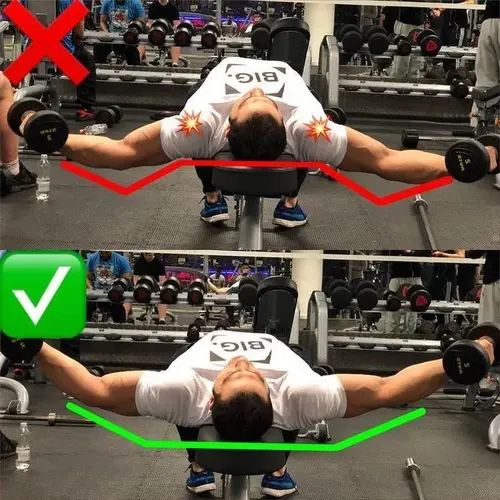
The dumbbell chest fly is a classic for good reason. It stretches the pecs across the full range and puts tension where pressing movements can’t. Instead of relying on your triceps or shoulders to move the load, the fly keeps most of the stress directly on the chest. It’s not a strength move, it’s a shaping tool. When done properly, it lights up the inner and outer portions of the pecs with serious time under tension.
The trick is to resist the urge to go heavy. This isn’t about how much you lift, it’s about how well you control the movement. At the bottom of each rep, your pecs are under maximum stretch. That’s where the growth happens, especially if you control the tempo.
Programming Tip: Stick with light to moderate weight, and aim for 10–15 slow, controlled reps. Keep a slight bend in your elbows throughout. Lower the dumbbells until you feel a deep but safe stretch, then squeeze the chest at the top like you're hugging a barrel.
Best Bodyweight Chest Exercise
Just because it doesn’t involve a barbell doesn’t mean it can’t build serious chest strength. Bodyweight exercises often get dismissed as beginner-level, but when done right, they deliver results and they expose weaknesses in form, control, and stability that weights sometimes hide.
Standard Push-Up
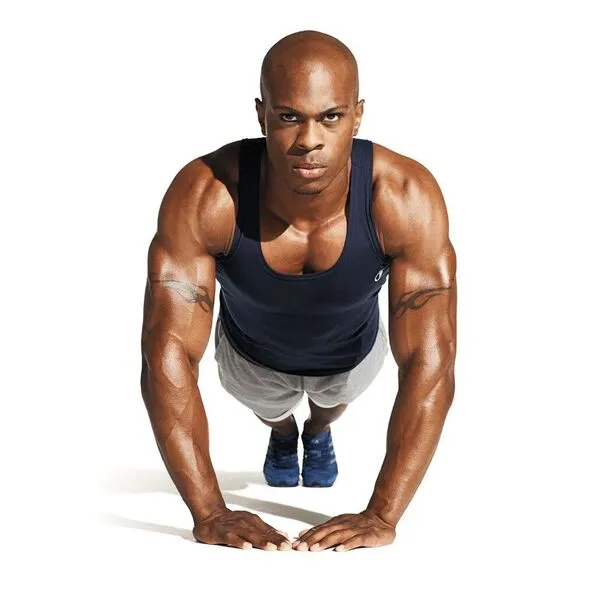
The standard push-up might be basic, but it’s anything but easy when performed with intention. It targets the chest, shoulders, and triceps in a movement that also forces you to engage your core and control your body position. For chest development, push-ups allow full scapular movement and let you train with high reps and volume. Perfect for hypertrophy, endurance, or a brutal finisher.
The beauty of push-ups is in the variation. Elevate your feet to hit the upper chest, slow the tempo to increase time under tension, or add resistance bands for progressive overload. It’s scalable and brutally effective if you actually challenge yourself with it.
Programming Tip: Use push-ups as a burnout after your main lifts or for high-rep finishers. Try 3–4 sets to failure with strict form. To progress, add weight with a vest, elevate the feet, or reduce rest intervals between sets.
Best Chest Exercise with Cables
When you want full control over tension across the entire range of motion, cables are in a league of their own. Unlike free weights, where resistance shifts depending on gravity, cables provide consistent load from start to finish. This makes them perfect for chest isolation, especially when you're focused on contraction over pure load.
Standing Cable Fly
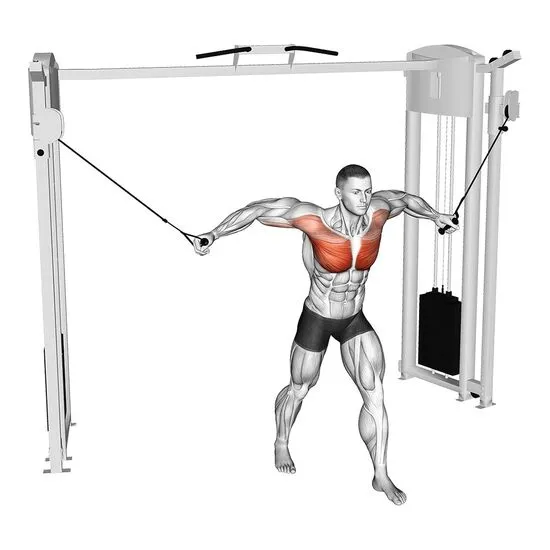
The standing cable fly is all about precision and feel. It lets you fine-tune the angle of your chest work. Go high to hit the lower chest, low for upper chest, or parallel for the midline. That control lets you train weak points or layer volume into your chest day without overloading your joints or shoulders.
This move excels in building definition. It’s not for max strength, it’s for quality movement. You’re creating constant time under tension, and the ability to adjust angles adds versatility you just can’t replicate with dumbbells or machines.
Programming Tip: Place it at the end of your chest session. Aim for 3–4 sets of 12–15 reps, with a slow, controlled tempo and a deliberate pause at the peak contraction. Focus less on the weight and more on keeping the motion smooth and the chest engaged through every inch.
Best Isolation Chest Exercise
Not every chest movement needs to be a compound lift. Sometimes, the goal isn’t to move a ton of weight. It’s to isolate the pecs, eliminate momentum, and focus entirely on muscle contraction. That’s where machines earn their place, especially for dialing in form or squeezing out extra volume without beating up your joints.
Pec Deck Machine
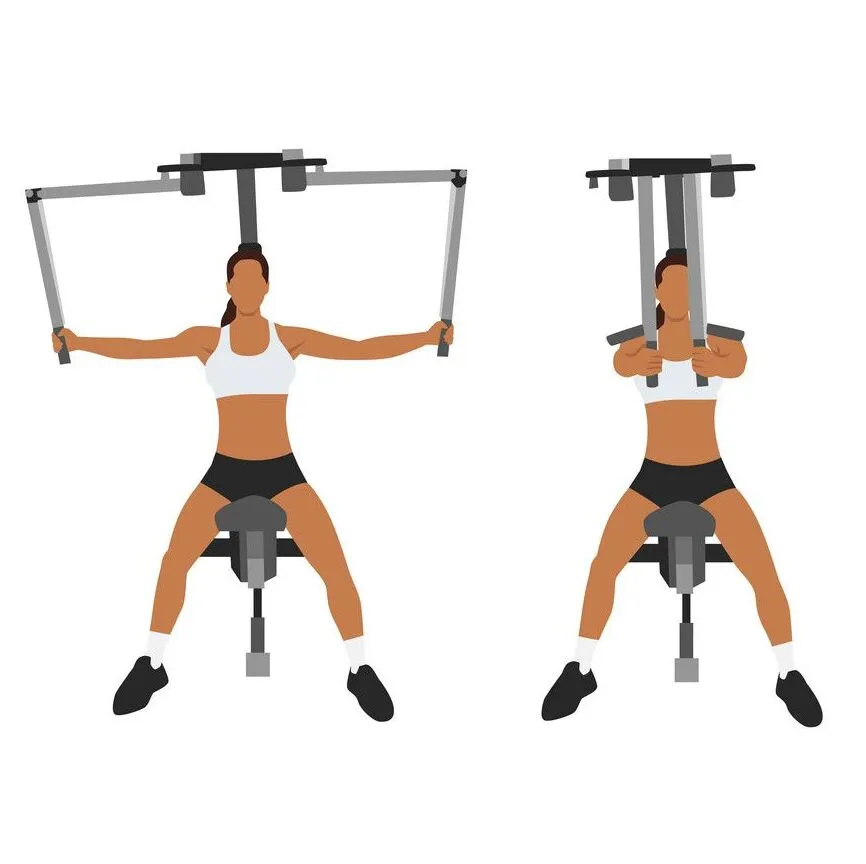
The pec deck machine is one of the most effective isolation exercises for targeting the chest, especially the inner fibers. It locks your arms in a fixed path, which means all you have to do is focus on squeezing your pecs together through each rep. There’s minimal help from stabilizing muscles, so your chest gets nearly all the attention.
This movement shines in high-rep, hypertrophy-focused programs, but it’s also useful for lifters recovering from shoulder strain. Since the machine supports the arms, it takes stress off the rotator cuff while still allowing a solid contraction.
Programming Tip: Set the handles so you feel a strong stretch at the start without hyperextending your shoulders. Use a light to moderate weight and pump out 12–20 reps per set. Pause at the peak of each rep and control the return, don’t let the stack snap back.
Best Chest Exercise for Home Workouts
Training at home doesn’t mean sacrificing chest gains. You just need the right tools and a little creativity. Resistance bands offer a surprising amount of challenge when used correctly. They’re portable, joint-friendly, and provide increasing tension as the movement progresses, which makes them ideal for chest-focused work in a limited space.
Resistance Band Chest Press
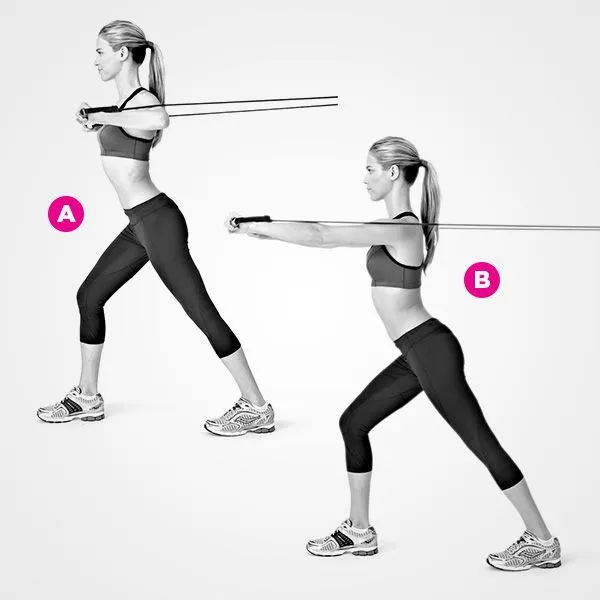
The resistance band chest press mimics a dumbbell or barbell press, but with a key difference: the resistance gets harder as you extend. That constant progression challenges your chest muscles in a way that's tough to replicate with free weights, especially at home. Loop the bands around a sturdy anchor behind you, and press forward just like you would on a bench.
Unlike bodyweight moves like push-ups, this exercise allows for steady progression by adjusting band tension or adding thicker bands. You can also change the angle, pressing upward to emphasize the upper chest, or downward for more lower chest engagement.
Programming Tip: Use a slow tempo to keep the bands from snapping you back. Stick with 3–4 sets of 10–15 reps, focusing on control and full extension. Don’t just push. Actively squeeze your chest at the end of each rep, then return with control.
Best Chest Exercise for Muscle Definition
If you’re looking for that deep-cut line between your pecs or trying to carve out better separation in your upper body, you need a move that does more than just move weight. The goal here isn’t just bulk, it’s shape, stretch, and targeted muscle control. That’s where this old-school staple still holds serious value.
Dumbbell Pullover
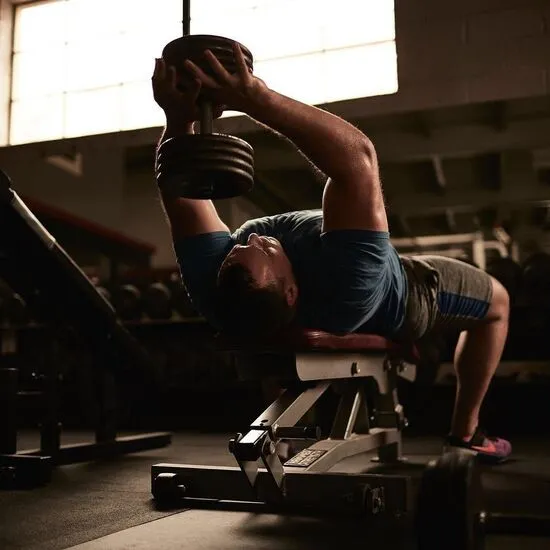
The dumbbell pullover is often overlooked in modern chest routines, but it’s a fantastic tool for increasing upper body definition and expanding the chest cavity. Done lying flat on a bench, this movement combines elements of a chest stretch and a lat isolation, making it a unique hybrid that hits multiple angles.
As you lower the dumbbell behind your head, the pecs and lats both engage to control the descent. But the key is in the return. Bringing the weight back over your chest using a focused chest squeeze. It’s particularly good for hitting the upper chest and serratus, helping to create that 3D look around the ribcage.
Programming Tip: Use this as a finisher, after your heavy pressing is done. Moderate weight works best. Focus on a deep stretch and controlled return. Try 3 sets of 12–15 reps, keeping your hips slightly dropped to maximize range without turning it into a triceps extension.
Best Chest Exercise for Strength Athletes
For lifters focused on performance whether that’s a bigger bench, stronger triceps, or more explosive pressing. Accessory movements matter. You need something that reinforces technique, builds lockout power, and still taxes the chest enough to support growth. This variation does exactly that.
Close-Grip Bench Press
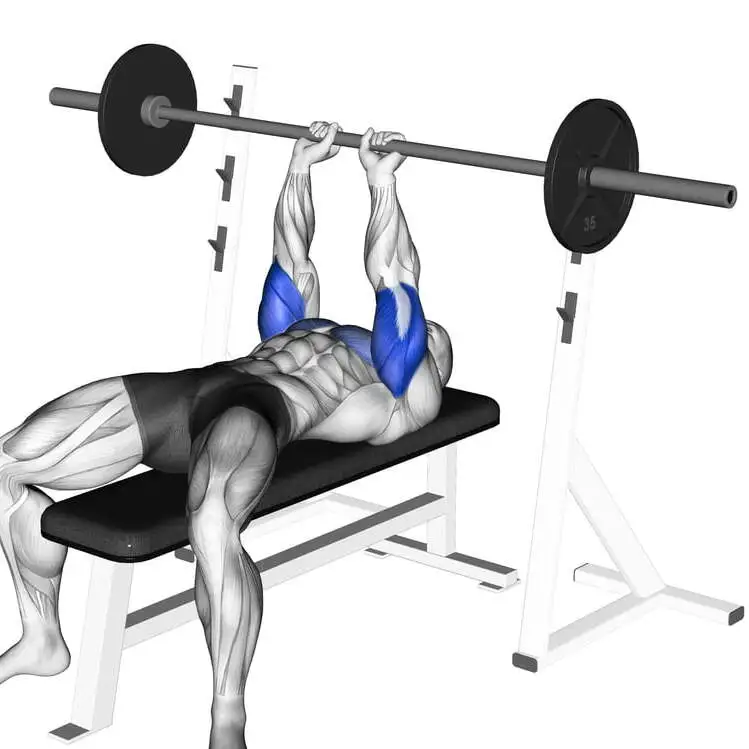
The close-grip bench press shifts emphasis slightly away from the outer pecs and more toward the inner chest and triceps. But don’t let that fool you, it’s still a chest builder. It forces you to control the bar path and engage your upper body as a unit, making it one of the most functional pressing variations in a strength-focused chest routine.
By narrowing your grip (just inside shoulder-width), the pecs still drive the weight off your chest, but your triceps take more of the burden toward the top. That carryover helps with bench lockout and transfers well into push-heavy sports or powerlifting progressions. It’s also a great secondary movement after a heavy barbell or dumbbell press.
Programming Tip: Plug this in as your second pressing movement on upper or push days. Stick with 4–6 reps per set if strength is the focus, and be mindful of your wrist alignment. Don’t go too narrow. Add a pause at the bottom for extra time under tension if you're working on power off the chest.
Tips for Structuring an Effective Chest Workout
You can’t just throw a bunch of chest exercises together and hope for results. Smart programming is what separates a decent session from one that actually builds size, strength, and shape. You need to hit different angles, vary intensity, and balance volume with recovery. Whether you’re training for aesthetics or pushing numbers, structure always wins.
How Many Sets and Reps to Aim For
If you’re training chest once per week, you’ll need more total volume. Think 12–16 working sets across 4–5 exercises. If you hit chest twice weekly (common in upper-lower or push-pull-legs splits), you can scale that back to 8–12 sets per session to stay recovered and keep performance up.
For strength, stay in the 3–6 rep range on your first movement—usually a barbell press. Then shift to 8–12 reps for hypertrophy work like dumbbell presses or machine flies. Use 12–15 reps or higher for isolation exercises where joint stress is lower but muscular fatigue is the goal.
How Often Should You Train Chest?
Most lifters do best training chest 1–2 times per week. If you’re only hitting it once, make sure you’re covering all angles in that session: flat, incline, isolation, and at least one finishing move for volume or stretch. If you’re training chest more frequently, split your focus: one session heavier with compound lifts, another lighter with more accessory and isolation work.
Remember, chest muscles don’t grow during your workout. They grow during recovery. Hit them hard, give them rest, and come back stronger.
Wrapping It Up: Build a Chest That’s Strong and Balanced
Training chest isn’t about tossing together a few bench sets and calling it a day. It’s about building pressing power, dialing in control, and using a mix of movements that hit the pecs from multiple directions. You don’t need a complicated plan. You need consistency, smart volume, and the right blend of exercises based on your goals.
If you’re chasing size, don’t skip the stretch and squeeze work. Movements like flys and pullovers might not load heavy, but they bring out detail and shape. If strength is your priority, start your sessions with low-rep barbell work and pair it with close-grip presses or incline dumbbells to cover your bases. And if you’re limited on equipment, bodyweight and banded variations can still deliver the kind of tension that sparks real growth.
No single chest exercise is a magic fix but the right combination, structured properly, can help you build a chest that’s more than just show. It’ll help your posture, boost your pressing, and complement your arms, shoulders, and back so you look like a complete athlete. Train hard, recover smart, and keep progressing. That’s how solid chests are built.

